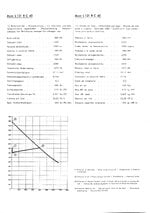Howard Gibson
Senior Airman
Why can't the Italians just develop bigger radial engines? The Fiat G.50 used the Fiat A.74, which was slightly bigger than the Wright R1820 and the Pratt and Whitney R1830. These were not up to powering mid-WWII fighter aircraft.Italy had a bad habit of shooting itself in the foot when it came to military development, from the shortsighted decision to nix inline engine development in 1933 to building tanks designed for the mountains of Sicily then using them in the deserts of Africa and the steppes of Russia.
While the tanks are outside the scope of this discussion, let's try and fix the aircraft development.
Some ideas to kickstart the discussion:
- Regia Aeronautica does not cancel all development of inline engines in 1933.
- Overall aircraft program requirements do not shift as much, resulting in the quicker introduction and production of aircraft.
- Reggiane successfully produces the Re 101~105 series of engines from 1937 to 1943, the Re 103 seeing widespread use on high-altitude interceptors such as the Ro.58 and Re.2005.
- The 16-cylinder Fiat AS.8 makes it into production by late 1941, primarily used by fighter aircraft such as the G.55 and C.205.
- The 18-cylinder Alfa Romeo 135 is designed for 87 octane off-the-bat, entering large scale production by 1938, the boosted 136 entering production in 1942.
The Italians also had problems with armament.
My understanding is that the Italians lacked the financial resources and infrastructure to develop a big war machine. When Mussolini announced that Italy would join Germany at war, king Victor Emmanuel III and Italian army staff tried to talk him out of it. The Italians built some nifty battleships. Maybe if they ditch naval warfare capability, they can build more advanced aircraft. Too bad for their forces in Africa.

